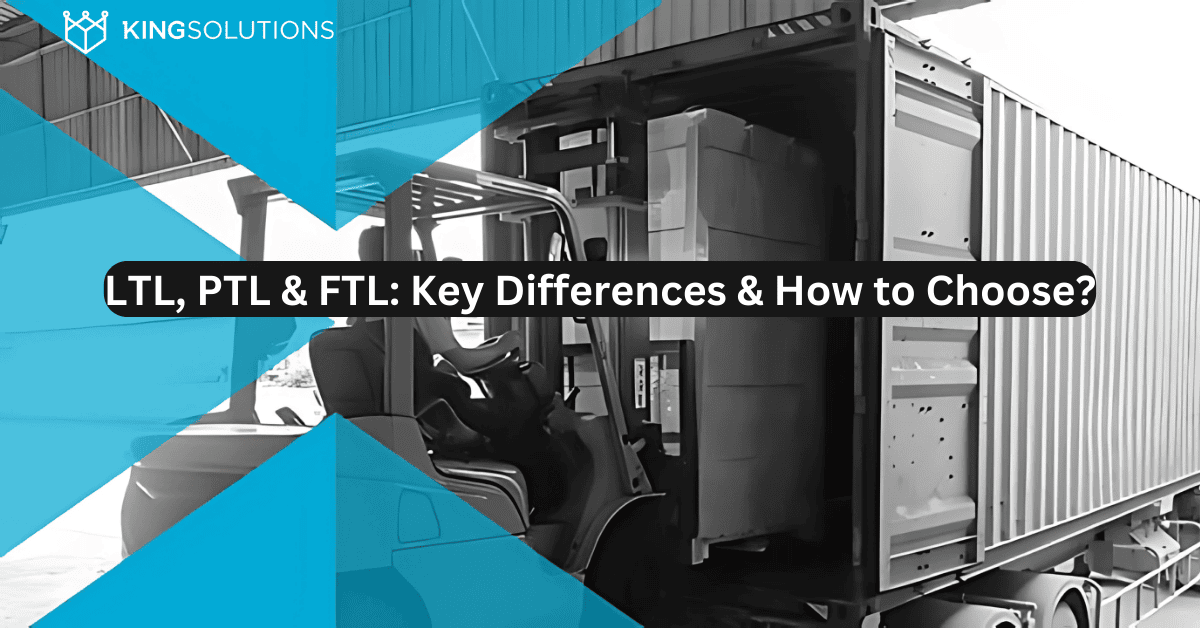LTL vs. PTL vs. FTL: Which Shipping Method is Right for Your Business?
The logistics industry can be volatile. Fuel prices rise and drop, carrier capacity fluctuates, and new challenges emerge daily. What may work for a shipper one day might not be reliable the next. Businesses must continuously adapt their shipping strategies to meet client needs, budget constraints, and the ever-changing logistics landscape.
One of the most important choices shippers face is deciding between LTL, PTL, and FTL shipping methods. But what are they? How do they differ, and which is best for your business? This post will break down each shipping method, its benefits, and which one may be the right fit for you.
What is LTL Shipping?
Less than truckload (LTL) shipping involves sharing freight trailer space with goods from other companies. This method is cost-effective for smaller shipments and is typically used when you do not need the full capacity of a truck.
Key Features of LTL Shipping:
- Pickup and Delivery (P&D) and linehaul: Your freight will be handled multiple times from origin to destination.
- Charges based on NMFC freight classification, considering the size and weight of your shipment.
LTL is ideal for businesses that don’t have enough freight to fill an entire trailer but need flexibility to ship as needed. It’s also environmentally friendly, as trailer space is optimized and fuel use is minimized.
Is LTL Shipping Right for Your Business?
Benefits:
- Reduced costs: You share the cost of shipping, fuel, and other expenses with other shippers.
- Flexibility: Shipments can be scheduled as needed without waiting to fill an entire trailer.
- Eco-friendly: By sharing trailer space, you maximize fuel efficiency.
Ideal For:
- E-commerce businesses with small to mid-sized shipment volume.
- Shipments of 4 pallets or less.
- Dense freight with standardized dimensions.
Drawbacks:
- Longer delivery time due to shared capacity and multiple stops.
- Increased handling, leading to potential damage.
- Limited liability for high-value items.
Learn more about LTL shipping options from Inbound Logistics and FreightCenter.
What is PTL Shipping?
Partial truckload (PTL) shipping is ideal for shipments that range from 5 to 20 pallets and weigh less than 30,000 lbs. While your shipment may share a trailer with other goods, once loaded, it stays in the same trailer until delivery, unlike LTL, which makes multiple stops.
Is PTL Shipping Right for Your Business?
Benefits:
- Less handling: Once loaded, the products are not touched until they reach the destination.
- Freight classification: Rates are based on weight or linear feet, rather than NMFC freight classification.
- Cost savings: PTL is a better option for high-value or fragile freight due to less handling.
Ideal For:
- Businesses shipping fragile products or high-value freight.
- Shipments requiring 5 to 20 pallets but not a full trailer.
Drawbacks:
- Longer transit time due to multiple stops.
- Potential shipping delays from freight consolidation and capacity limitations.
For a deeper dive into PTL shipping, check out resources from Logistics Management and FreightWaves.
What is FTL Shipping?
Full truckload (FTL) shipping is for businesses with large shipments that fill an entire trailer. FTL offers a direct route from origin to destination, with no shared space or stops along the way.
Is FTL Shipping Right for Your Business?
Benefits:
- Direct routes: The shipment goes straight from pickup to delivery with no stops.
- Less handling: Fewer touchpoints reduce the risk of damage.
- Faster delivery: Fewer delays as there are no intermediate stops.
Ideal For:
- Shipments of 20 or more pallets.
- Businesses needing quick delivery.
- High-security or damage-sensitive products.
Drawbacks:
- Higher cost, especially if the trailer is not fully utilized.
For more on FTL options, explore insights from American Trucking Associations and U.S. Department of Transportation.
Conclusion: Choosing the Right Shipping Method for Your Business
At King Solutions, we specialize in helping businesses choose the best shipping method based on their needs. Whether you need LTL, PTL, or FTL, we have a wide partner network to ensure your shipments are handled efficiently. Every business is different, and sometimes using a combination of these methods can be more effective. Let us help you decide the most cost-effective and timely solution for your shipping needs.








 Joel Rice
Joel Rice